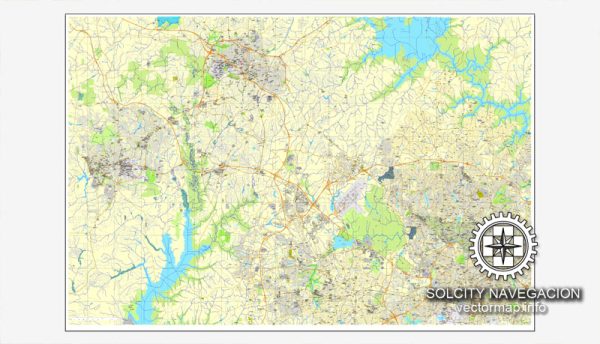The urban development of Raleigh, Chapel Hill, and Durham in North Carolina is intertwined with the broader history of the state and the United States. Each city has its unique characteristics, but they share common themes related to growth, economic development, education, and cultural evolution.
- Raleigh:
- Early History: Raleigh, the capital of North Carolina, was planned and developed in the late 18th century to replace Bath as the state capital. The city’s grid pattern was designed by William Christmas, and it was named after Sir Walter Raleigh. The intent was to create a central location that would be more accessible to the state’s citizens.
- Government and Education: Raleigh’s development has been significantly influenced by its role as the state capital. Government buildings, including the North Carolina State Capitol, played a vital role in shaping the city’s landscape. The presence of institutions like North Carolina State University has contributed to the city’s growth as an educational and research hub.
- Economic Growth: Over the years, Raleigh has experienced significant economic growth, driven in part by the presence of the Research Triangle Park (RTP). RTP, a large research and technology park, has attracted numerous high-tech companies, contributing to the region’s prosperity.
- Chapel Hill:
- University Town: Chapel Hill is home to the University of North Carolina at Chapel Hill, one of the oldest public universities in the United States. The university’s establishment in 1789 has had a profound impact on the town’s development, influencing its cultural, intellectual, and economic life.
- Cultural and Educational Hub: Chapel Hill is known for its vibrant cultural scene, with a thriving arts community, music scene, and numerous festivals. The university’s influence extends beyond education, shaping the character of the town and fostering a dynamic atmosphere.
- Planning and Preservation: Chapel Hill has been intentional about preserving its historic character. Efforts have been made to maintain the charm of the downtown area and protect green spaces. Town planning has aimed at balancing growth with preservation.
- Durham:
- Tobacco Industry: Durham’s early development was closely tied to the tobacco industry. The city became a major tobacco processing and manufacturing center in the late 19th and early 20th centuries, with companies like Bull Durham Tobacco Company gaining prominence.
- Research Triangle Park Impact: Similar to Raleigh, Durham has benefited from the presence of the Research Triangle Park. The city has evolved beyond its tobacco roots to become a diverse economy, with a focus on healthcare, technology, and education.
- Cultural Renaissance: In recent decades, Durham has experienced a cultural renaissance, with a revitalized downtown area featuring an array of restaurants, shops, and cultural venues. Historic tobacco warehouses have been repurposed, contributing to the city’s unique character.
Overall, the urban development of Raleigh, Chapel Hill, and Durham reflects the diverse history and economic evolution of the region, from early agricultural and industrial roots to the modern emphasis on technology, education, and cultural vibrancy. Each city has played a distinct role in shaping the Research Triangle area into a dynamic and thriving metropolitan region.


 Author: Kirill Shrayber, Ph.D.
Author: Kirill Shrayber, Ph.D.